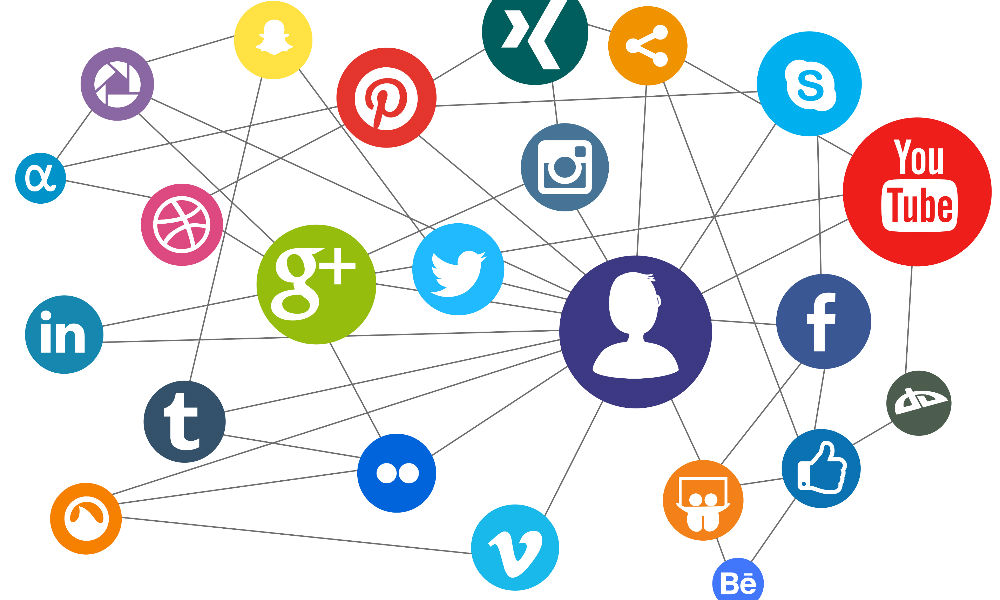Just How Social Media Operating Systems Have Advanced: Evaluating Their Effect On Communication and Marketing Strategies

Early Social Media Platforms
It enabled users to develop profiles, link with close friends, and share web content, laying the foundation for future systems. Following this, systems like Friendster (2002) and MySpace (2003) obtained appeal by presenting more interactive features, making it possible for users to customize accounts, share songs, and engage in neighborhood structure.
These very early systems highlighted user-generated material and social networking, growing a sense of on the internet neighborhood. They showcased the potential of electronic interaction, enabling customers to reveal themselves and connect with others across geographical obstacles. These websites also dealt with challenges, such as technical constraints and the battle to preserve individual interaction.
The early 2000s represented an experimental period for social media, as designers looked for to refine the customer experience and broaden capabilities. This period set the phase for the explosive development of social networks that would certainly comply with, ultimately changing interaction and advertising strategies in extraordinary ways.
The Surge of Visual Web Content
As social media sites systems developed, a noteworthy shift occurred in the direction of the prestige of aesthetic material, fundamentally altering customer involvement techniques. This transformation is mostly connected to the inherent human preference for aesthetic stimuli, which can share messages more effectively than message alone. Platforms such as Instagram, Pinterest, and Snapchat have maximized this pattern, prioritizing picture and video sharing to enhance customer experience and communication.

Moreover, the assimilation of features like Stories and online streaming has actually allowed real-time engagement, enabling brand names to showcase their offerings dynamically. Analytics devices have actually even more empowered online marketers to analyze performance metrics associated with aesthetic web content, refining their strategies based on audience preferences. Eventually, the emphasis on aesthetic interaction has redefined just how brands get in touch with their audiences, making it an indispensable aspect of contemporary advertising strategies in the digital age.
The Influence of Influencers
Influencers have emerged as critical numbers in the landscape of social media sites, reshaping exactly how brand names involve with their audiences and market their items. These individuals, commonly concerned as innovators, possess the capacity to reach substantial target markets and grow authentic partnerships with their fans. Their regarded trustworthiness and relatability enable them to connect brand name messages in such a way that reverberates deeply, bring about enhanced consumer trust and commitment.
Brands progressively identify the value of influencer partnerships, commonly going with targeted partnerships that align with their worths and objectives. This tactical technique permits tailored advertising and marketing campaigns that take advantage of get redirected here influencers' distinct styles and material layouts. As an outcome, brands can properly use niche markets and foster involvement that conventional advertising and marketing approaches often struggle to accomplish.
In addition, the effectiveness of influencer advertising and marketing is evidenced by its measurable effect on sales and brand name recognition. Metrics such as interaction prices, conversion rates, and audience development offer brand names with understandings into project performance. As influencers continue to evolve, they will continue to be integral to forming communication methods, driving customer actions, and redefining the marketing landscape within social media sites platforms.
The Shift to Short-Form Video
Recent trends in social networks have actually highlighted a significant change in the direction of short-form video clip web content, a format that has actually swiftly captivated target markets and redefined interaction methods. Platforms such as TikTok, Instagram Reels, and YouTube Shorts have become frontrunners in this sensation, attracting users in with easily digestible and amusing clips. This shift reacts to the decreasing interest periods of customers, that currently prefer fast, impactful messaging over longer stories.
Marketing professionals have actually acknowledged the capacity of short-form videos to boost brand exposure and foster connection. These bite-sized pieces of web content permit brand names to share their messages succinctly while motivating individual interaction with shares, likes, and comments. Additionally, the innovative adaptability integral in short-form video clip-- varying from storytelling to tutorials-- offers brands with varied avenues for expression.
Consequently, companies are significantly incorporating short-form video clip right into their advertising strategies, commonly leveraging influencers to intensify reach and authenticity. This Extra resources development not only advertises greater audience interaction yet likewise reflects a more comprehensive fad in the direction of visual interaction in the digital landscape. Consequently, organizations have to adapt to this vibrant atmosphere to continue to be appropriate and efficient in their outreach initiatives.
Information Personal Privacy and Customer Depend On
How can social media systems balance individual engagement with the important of information privacy? This concern has come to be progressively essential as customers express expanding problems over how their individual info is utilized. In an era where information violations and personal privacy detractions dominate headings, systems have to focus on openness and user control to promote count on.
To achieve this balance, social media platforms need to embrace durable privacy policies that verbalize data use and defense steps clearly. Executing functions that permit customers to customize their personal privacy settings can equip individuals, allowing them to determine what details is shared and with whom. Transparency records Web Site detailing data demands and violations can further enhance individual count on.
Moreover, platforms can take advantage of ethical information methods in their advertising methods, concentrating on consent-based advertising versions that prioritize customer preferences. By utilizing anonymized data for analytics, systems can still provide useful insights to marketing professionals without compromising individual privacy.
Inevitably, the success of social media sites systems hinges on their capacity to grow a credible atmosphere. By prioritizing information privacy, they can not just improve individual engagement however additionally place themselves as accountable guardians of user information in a progressively data-sensitive landscape.
Conclusion
The development of social media systems has actually dramatically transformed communication and advertising techniques. The transition from text-based interactions to aesthetic web content and short-form videos has actually improved customer engagement.